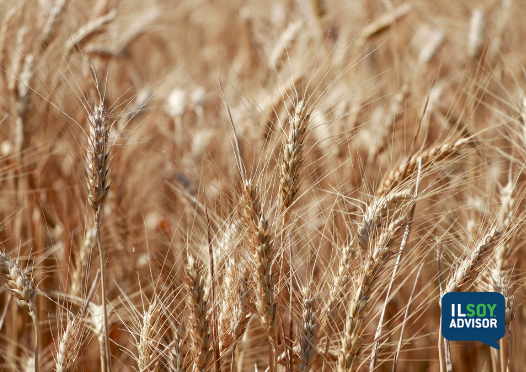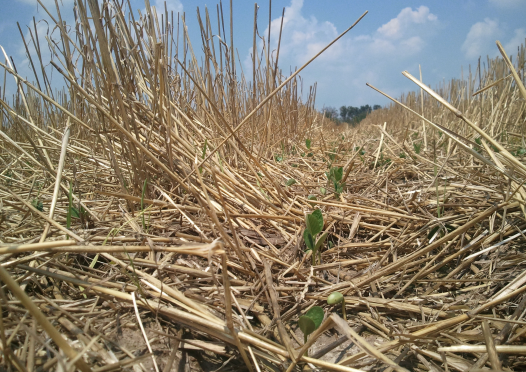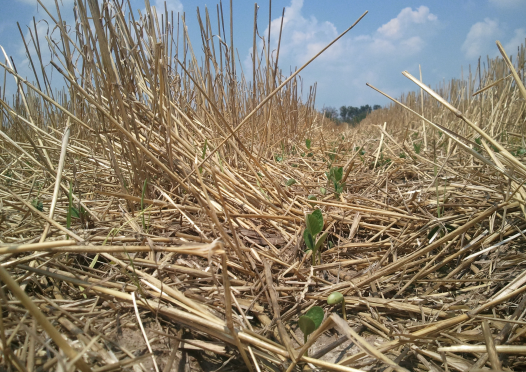ILSOYADVISOR POST
Wheat Yield Winners Offer Double-Crop Management Tips
Double-cropping wheat and soybeans is a popular strategy in parts of Illinois. Farmers who won the Illinois Wheat Association’s (IWA) 2020 yield contest recently offered their tips for success during the 2021 Double-Crop Farmers Forum sponsored by ISA, the IWA and others.
David Justison from Montgomery County placed first with a yield of 126.7 bushels, Dan Rubin of Fayette County was second with 124.7 bushels and Dale Wehmeyer from St. Clair County was the third-place winner with a yield of 119.4 bushels per acre. The management practices below are some of the highlights as discussed by these three farmers during the webinar.
Wheat Preparation and Planting
- Variety selection. Know each variety’s strengths and weaknesses and be prepared to mitigate risk from weaknesses. For example, check tillering abilities and yield potential. If a variety doesn’t produce tillers quickly, plant that variety first. Move robust tillers to the back of the planting program. Good standability and scab resistance are essential.
- Variety selection. Look at variety trials from multiple states, including Kentucky, Missouri and Illinois. Choose varieties that performed well in more than one trial. Work with a seed company that specializes in wheat research, not one that just sells wheat seed.
- Residue management. For winter wheat following soybeans, evenly spread residue from the previous crop, especially if they were high yielding soybeans. Farmers who plant earlier maturity soybean varieties find a timely harvest allows stubble to dry out first.
- Tillage. Till fields one or two times ahead of drilling wheat to assure a good seed bed.
- Planting. While some farmers use 15-inch rows, 7.5-8-inch rows are preferred. Row width should be a consideration in seed selection. Drilling provides better yield than broadcasting seed. Get every seed in the ground, and plant treated seed to help minimize problems with aphids. Hydraulic down-pressure on the drill improves stand uniformity.
- Seeding rates. Depending on seed size, rates of 1.2-1.7 million seeds per acre work best. The rate chosen should also take into account planting date, fall tiller production and whether winter annual weeds are present that can be smothered with higher seed rates.
- Fall fertilizer. Fall fertilizer plans will vary by field and farmer. For this group, uses include potash and MESZ applications to all-liquid nitrogen, phosphorus and potassium. Blanket spreading fertilizer is preferred to variable rate applications.
In-Season Wheat Management
- Spring fertilizer. Whether a fall sulfur application was made or not, consider including sulfur in the spring, possibly as a foliar application. Evaluate the wheat stand to determine nitrogen needs. If the stand is thin, increase the first-pass rate to increase tillers. Consider a 28 percent all-liquid sidedress with emphasis on even application. For the second pass, evaluate weather conditions to determine if a bump in rates is needed. Another option is treated urea with Agrotain, depending on how the crop looks.
- Weed control. Winter annual weeds such as henbit and chickweed can threaten yield potential. Apply Harmony in the fall if weeds are prevalent and field operating conditions are good. Spring applications help eliminate competition for nutrients, sunshine and water as long as the weather is consistently warm and the ground is solid.
- Fungicide applications. Fungicide use varies by field and farmer. Suggestions include two passes – one at 5-leaf and one at 10.5.1 in April – for whole plant protection and scab control. Aerial application also is effective. Monitor diseases and weather conditions to the south for early indications of problems that may require scouting.
Wheat Harvest
- Moisture. A good place to start with harvest is at 19-20 percent moisture, if planning to use a dryer. For wheat seed production, harvest at under 14 percent is best with air drying. For commercial wheat production, where margins are thinner, try and avoid the cost of bin drying with forward sales and sales off the combine when possible.
- Drying decisions. Use a grain equilibrium chart to determine best harvest time to avoid the need for drying. Check temperature and humidity, find the combination on the chart, and calculate moisture. Determine if a fan needs to be run if wheat is going in a bin.
Soybean Planting Preparation
- Field management. Planting soybeans following wheat harvest is all about the straw. With 100-120-bushel wheat yields, more straw is left after harvest that can be green and tough. Several options have been explored by these farmers:
- Planting in thick straw can be successful.
- Run a high-speed disk after harvest, spread residue, turbo till and run the drill.
- Spread straw as evenly as possible with a good chopper-spreader.
- Burn the straw.
- Find a local dairy farmer who wants to come get the straw. Give it a day to dry and then no-till directly into stubble.
- Experiment with press wheels.
Click here to watch the recorded session of the Double Crop Farmers Forum.





Comments
Add new comment